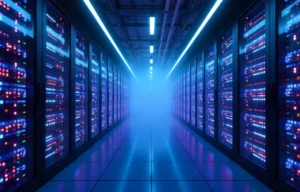

Prefer to listen instead? Here’s the podcast version of this article.
The phrase “AI war” might conjure images of tech giants battling over innovation supremacy. But the reality is far more nuanced and far-reaching. Beneath the surface, the AI race is deeply entwined with issues of economics, regulation, and global positioning, where the stakes are much higher than just technological dominance.
This week’s developments in the AI space underscore how this war is about ecosystems, power dynamics, and long-term influence. Let’s dive into the key points shaping this narrative, with insights from leading voices and sources to back them up.
The AI industry’s reliance on massive computational resources has long been dominated by Nvidia, a company synonymous with high-powered GPUs. However, as highlighted in [Barrons], scaling models beyond a trillion parameters brings diminishing returns. Tech firms are now exploring more economical solutions like specialized chips from AMD and Intel, which could offer a competitive edge in an increasingly saturated market.
This shift could democratize AI development, lowering barriers for smaller players while reducing monopolistic tendencies. If Nvidia was the emblem of the first AI wave, the next might see an expanded ecosystem of hardware contributors—a crucial pivot in this “war.”
As companies chase the elusive goal of artificial general intelligence (AGI), cost efficiency has become a significant bottleneck. A recent [Wired article] reveals that the future of AI could hinge on inference—essentially how models operate post-training. Instead of inflating training budgets, organizations are refining inference processes to achieve more with less.
This shift reflects a broader trend towards leaner, smarter AI systems. Developers, from startups to giants like OpenAI, are focusing on targeted applications where AI delivers precise value. Expect this lean approach to spark a new wave of AI innovation, reducing operational costs for businesses globally.
AI pioneers like OpenAI are acknowledging that building ever-larger models isn’t sustainable. In a recent [Reuters feature], researchers emphasized the need for training methods that emulate human-like thinking, allowing AI to learn efficiently with less data.
This pivot aligns with industry sentiment that future advancements will require more than brute computational power. From synthetic data generation to neuromorphic computing, the industry is exploring creative pathways to develop smarter, not just bigger, systems.
AI isn’t just about algorithms; it’s about the ecosystems they inhabit. Google’s strategy of integrating generative AI across its suite of products—while undoubtedly innovative—has also drawn regulatory scrutiny. According to [The Atlantic], the Department of Justice is investigating whether such integration stifles competition.
This highlights a larger narrative: the AI war is not just about dominance but also fairness. As regulators step in, companies may need to rethink how they position their AI innovations within larger ecosystems, ensuring competition thrives alongside progress.
The world’s fascination with generative AI often overlooks its broader potential. As explored in a [Wall Street Journal article], transformer algorithms—the backbone of modern AI—are driving breakthroughs in robotics, healthcare, and beyond.
However, the journey is far from over. While AI excels at certain tasks, most systems still require human oversight. This underscores a critical balance in the AI war: building systems that are both powerful and responsibly managed.
The AI war is no longer just a race to build the biggest model or deploy the fastest algorithm. It’s a complex, multi-faceted struggle involving economics, regulation, and strategic innovation. Companies that thrive in this space will do so not by dominating their competitors but by aligning with global needs and ethical frameworks.
WEBINAR